Mayan Cards
Mayan Playing Cards from Guatemala / Baraja Maya / containing illustrations of archaeology, art, folklore, history and mythology of the Mayans.
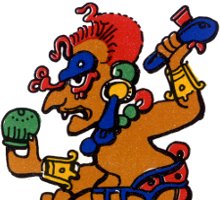
Mayan Mythology Playing Cards from Guatemala, printed by graphic design and printing firm Litografía José Arimany Hijos (founded 1952) and published by Promotora Continental.
The pack contains 52 cards + 2 jokers. Each card contains a colour illustration of Mayan art, along with the suit symbols and index numbers. The leaflet which accompanies the pack reads: “This edition of Mayan Playing Cards, containing illustrations of archaeology, art, folklore, history and mythology of the Mayans has been carefully designed so that the reproductions of the deities as well as of the archaeological ruins are as accurate as the originals taken from different manuscripts and archaeological ruins engraved in stone and worked in clay; in these designs you will find original art as it was molded many thousand years ago by Mayan artists.”
The Mayan deities depicted on the cards include Chaac, Itzamna, An Puch and Tlaloc as well as their consorts, wives and the feathered snake Quetzalcotl. See also: Mexican Aztec Cards
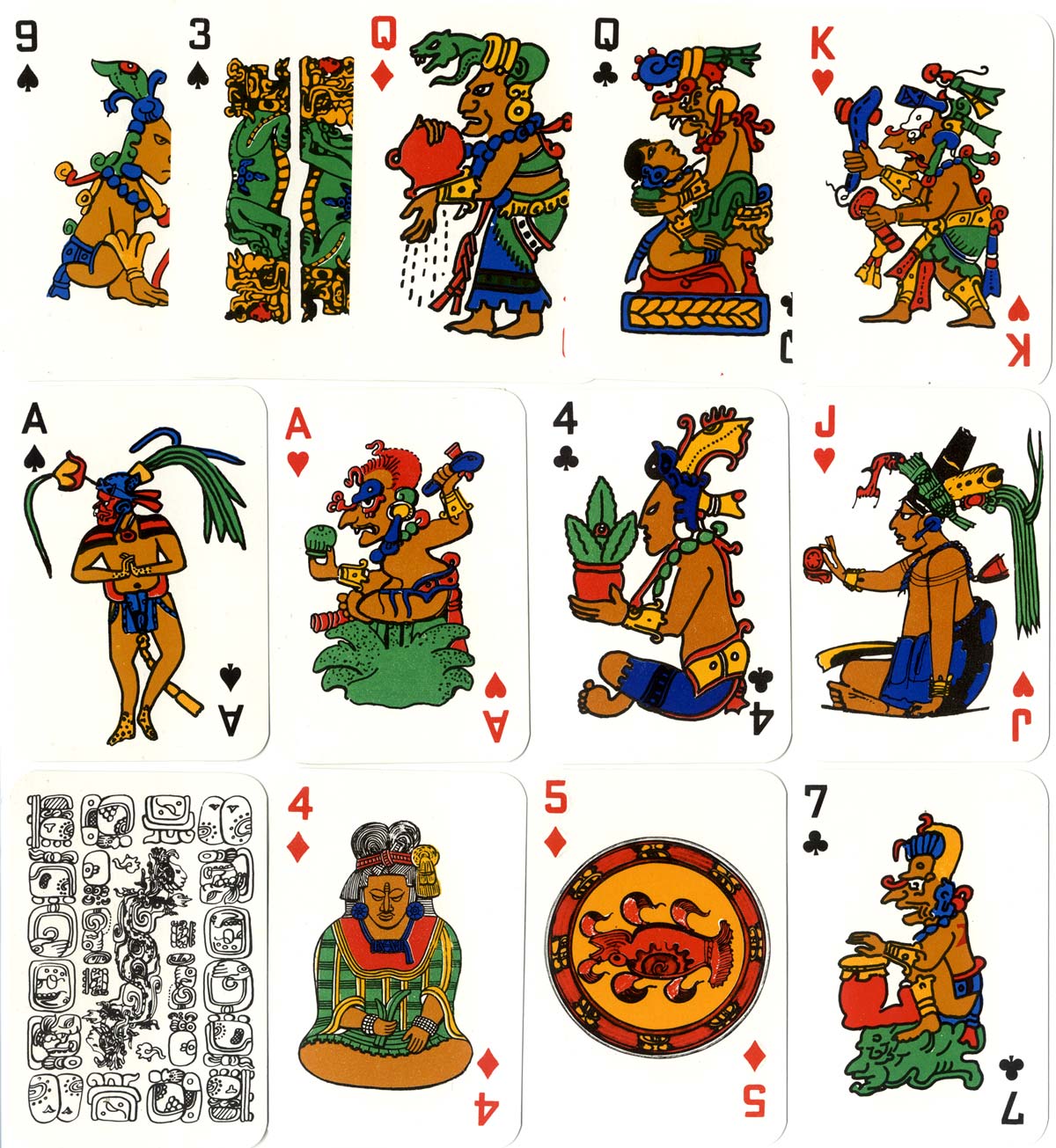
Above: Mayan Playing Cards - Baraja Maya - from Guatemala. 52 cards + 2 Jokers in box with explanatory leaflet in Spanish and English. The back of the cards shows a double-ended arrangement of Mayan motifs in black and white. The Four of Diamonds shows a whistle from Alta Verapaz, classic period. The Five of Diamonds shows a Trypode polychromed plate, 650 A.D. The Seven of Clubs depicts the God Chaac sitting on a reproduction of his own head.
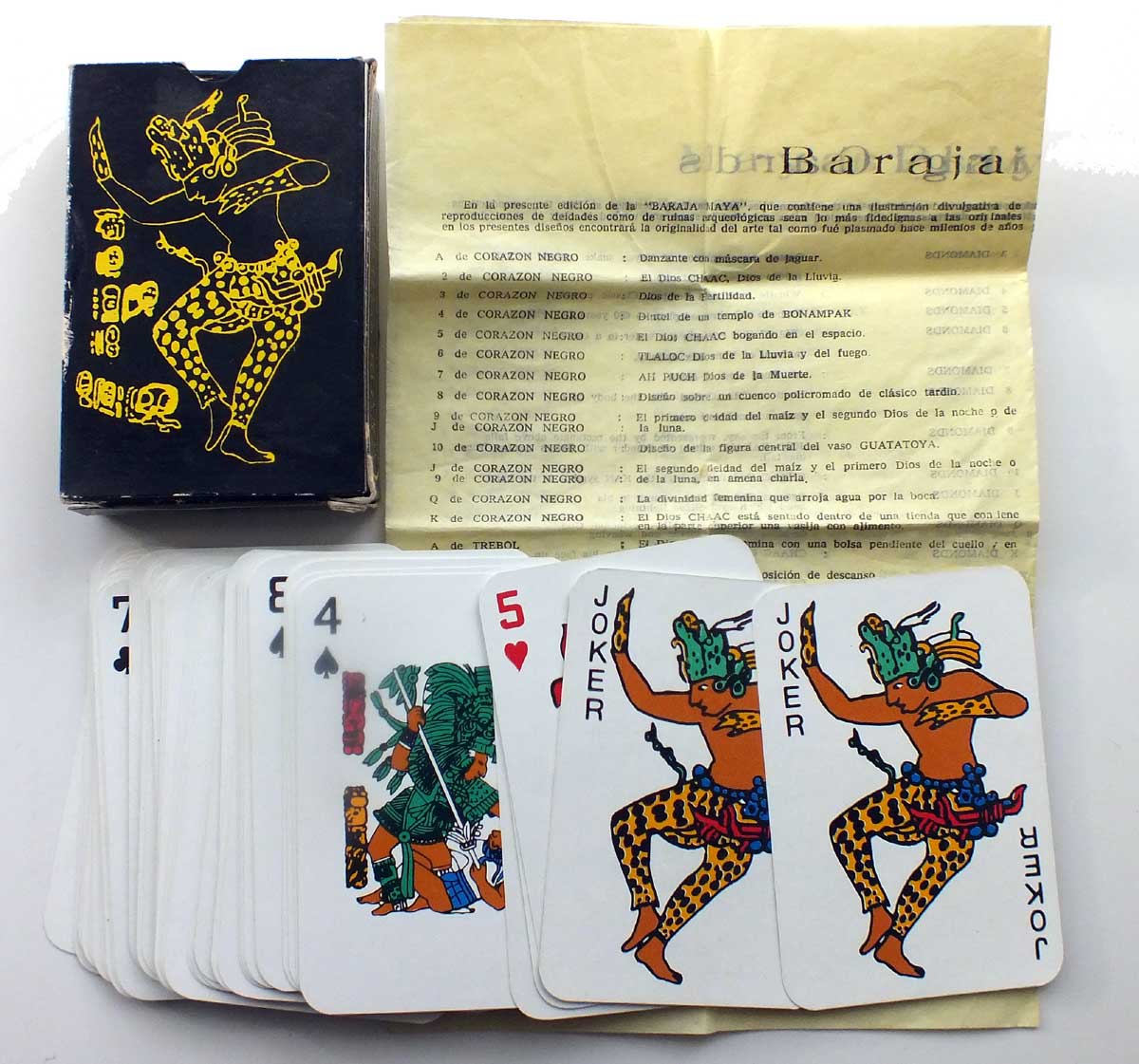
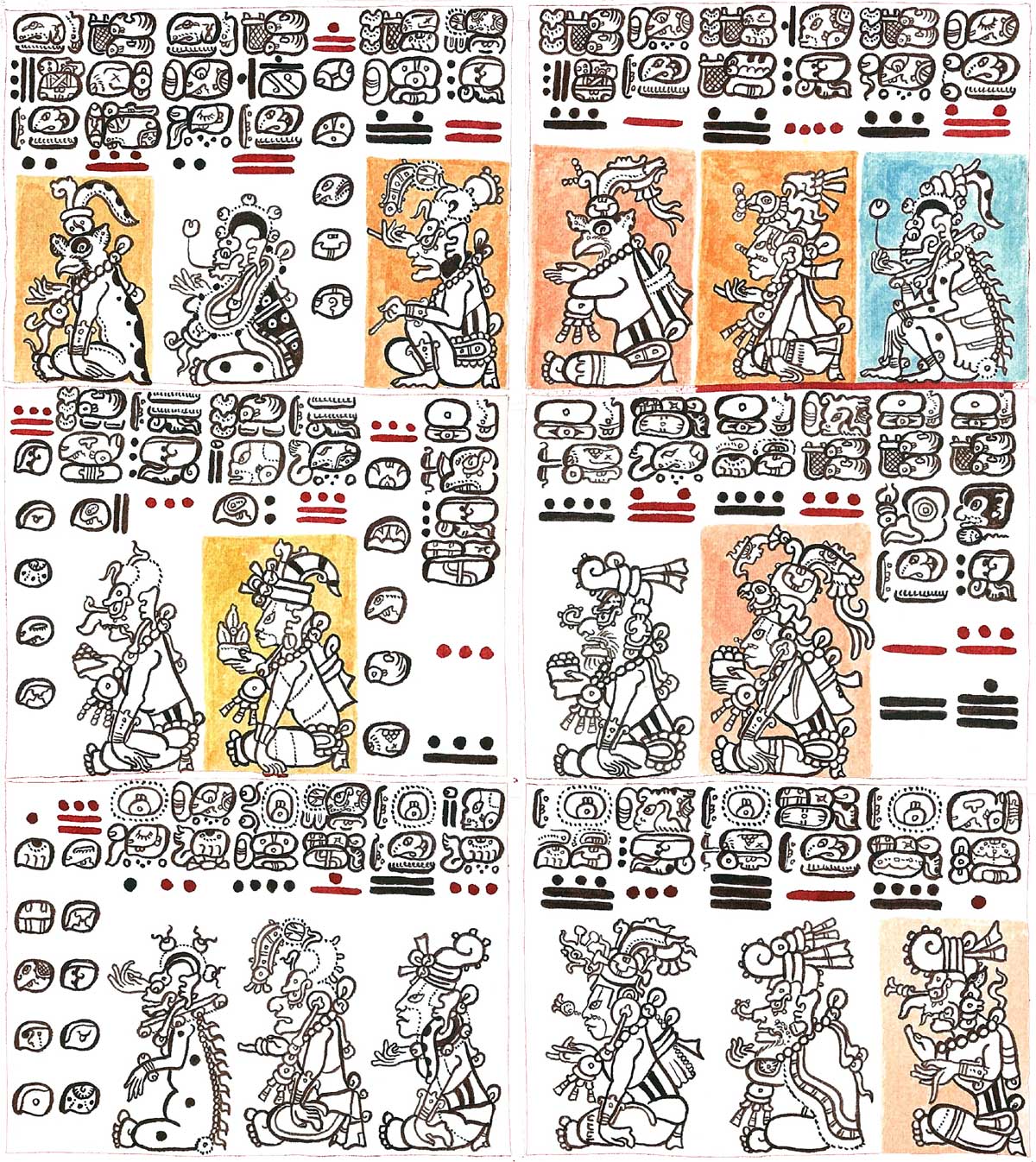
By Simon Wintle
Spain • Member since February 01, 1996 • Contact
I am the founder of The World of Playing Cards (est. 1996), a website dedicated to the history, artistry and cultural significance of playing cards and tarot. Over the years I have researched various areas of the subject, acquired and traded collections and contributed as a committee member of the IPCS and graphics editor of The Playing-Card journal. Having lived in Chile, England, Wales, and now Spain, these experiences have shaped my work and passion for playing cards. Amongst my achievements is producing a limited-edition replica of a 17th-century English pack using woodblocks and stencils—a labour of love. Today, the World of Playing Cards is a global collaborative project, with my son Adam serving as the technical driving force behind its development. His innovative efforts have helped shape the site into the thriving hub it is today. You are warmly invited to become a contributor and share your enthusiasm.

Leave a Reply
Your Name
Just nowRelated Articles
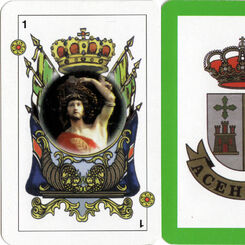
Baraja Acehucheña
Souvenir playing cards from Acehúche created by Nacho Julián, Spain, 2001.

Divine Art
Divine Art Playing Cards by Sunish Chabba & Guru Playing Card Company, 2016.

Cartas Precolombinas
Spanish playing cards with Pre-Columbian designs from Argentina, 2001.
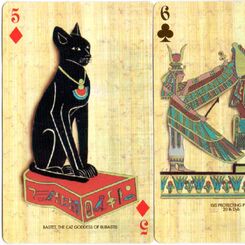
Papyrus playing cards
Egyptian ‘Papyrus’ playing cards with beautiful illustrations against a papyrus background.

Líneas de Nazca
“Líneas de Nazca” souvenir playing cards, Peru, c.2008.

Li River Souvenir
Li River Souvenir Playing Cards from China.

Adventures in Korea
Each card has a colour drawing of a Korean building, museum or tourist attraction with a brief descr...
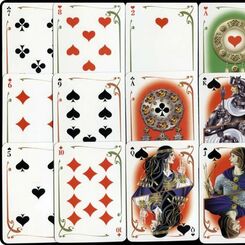
Latvia Art
Playing cards designed by artist Larisa Kovalass-Kovalevska on the theme of the Latvian folk epic “L...
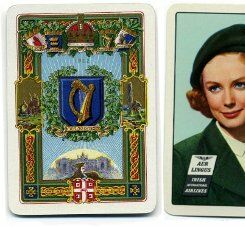
Irish Souvenir
Irish souvenir playing cards. The Joker has the inscription W.O., Dublin.
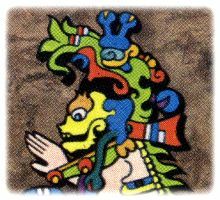
Maya Playing Cards
The designs of Mayan artists shown here give a general idea of their enormous artistic and cultural ...
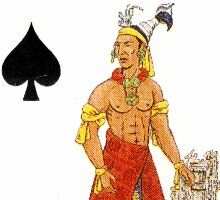
Mexican Poker
Mexican Poker cards made by Juegos y Fichas, S.A. de C.V., Mexico, 1991

Acapulco Souvenir
Acapulco Souvenir playing cards designed and printed by Foliproa S.A., Mexico.

Souvenir of Mexico
Souvenir of Mexico playing cards by Clemente Jacques y Cia, S.A., 1950s.

Guatemala
Playing Cards from Guatemala
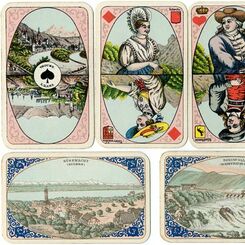
Souvenir Playing Cards
Tourist souvenir playing cards depict the aesthetic, political, social and economic conceptions of t...
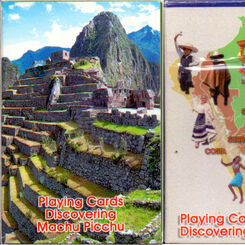
Fenno, Peru
Fenno souvenir playing cards, made in Peru.

Souvenir Playing Cards
Argentina publishes many tourist souvenir packs, usually with colour pictures on each card, and with...

Playing cards in Puerto Rico
Playing cards in Puerto Rico.

Cusco Inca Souvenir
Pre-Incas & Incas Souvenir Playing Cards, Cusco, Peru, 2000.
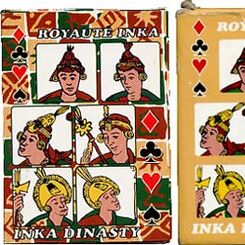
Inka-Dynasty
'Inka-Dynasty' playing cards are based on historic 16th century designs by the Peruvian chronicler F...
Most Popular
Our top articles from the past 60 days


 Your comment here. Your comment here. Your comment here. Your comment here. Your comment here. Your comment here. Your comment here. Your comment here. Your comment here. Your comment here. Your comment here. Your comment here. Your comment here. Your comment here. Your comment here. Your comment here. Your comment here. Your comment here. Your comment here. Your comment here. Your comment here. Your comment here. Your comment here. Your comment here. Your comment here. Your comment here. Your comment here. Your comment here. Your comment here. Your comment here. Your comment here. Your comment here.
Your comment here. Your comment here. Your comment here. Your comment here. Your comment here. Your comment here. Your comment here. Your comment here. Your comment here. Your comment here. Your comment here. Your comment here. Your comment here. Your comment here. Your comment here. Your comment here. Your comment here. Your comment here. Your comment here. Your comment here. Your comment here. Your comment here. Your comment here. Your comment here. Your comment here. Your comment here. Your comment here. Your comment here. Your comment here. Your comment here. Your comment here. Your comment here.




















